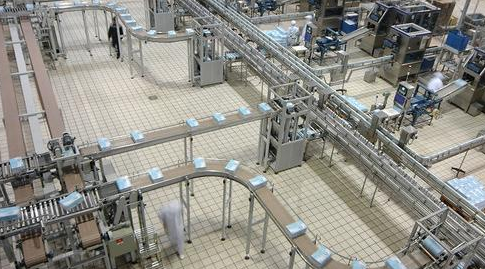Trump blames the cause of the US decline industry on robots
The U.S. media has highlighted that for Mr. Trump, if he insists on finding a target to demonize and blame for the loss of blue-collar jobs in key industries, it's not China or "bad trade deals" that should be held responsible—but robots. The real cause behind the decline in manufacturing jobs isn't foreign competition, but rather automation and technological advancement.
According to recent reports, 30 years ago, the U.S. steel industry employed around 188,000 people. Today, that number has dropped to approximately 86,000. President Trump faces pressure from tens of thousands of unemployed workers—many of whom supported him. He tries to reverse this trend by imposing high tariffs, but for the so-called “forgotten†workers, this approach is unlikely to bring real relief.
The report states that many experts believe the recent steel tariffs introduced by the Trump administration could lead to significant economic and national security errors. These tariffs will likely hurt industries that rely on steel as a raw material, while only benefiting a small group, such as the automotive sector. As a result, American consumers will end up paying more for products.

While the high tariffs are framed as a way to “punish China,†the reality is that China isn’t even among the top 10 sources of steel imports to the U.S. Instead, these tariffs will mostly affect allies like Canada. In response, these countries have threatened to impose their own tariffs on U.S. exports, which could ultimately harm American workers.
According to the report, the overall impact of these tariffs is expected to create more losers than winners in the U.S. economy. It remains unclear whether they will truly benefit the domestic steel industry.
The report also notes that current U.S. steel production levels are similar to those from 30 years ago, yet the number of workers employed in the industry has been cut in half. This is largely due to technological progress—essentially, the rise of robots. This trend is not unique to steel; it’s happening across many sectors. As economist Chad Sivoson from the University of Chicago’s Booth School of Business explains, “The better we get at manufacturing, the fewer people we need to make those products.â€
In particular, the steel industry has undergone a major transformation in recent decades. It has shifted from large, vertically integrated plants to smaller, more efficient “micro-factories†that recycle existing steel and require fewer workers. This shift has significantly reduced the number of jobs, despite maintaining output levels.
In addition to steel, Trump also imposed heavy tariffs on aluminum. Similar to the steel industry, the aluminum sector has seen substantial gains from productivity improvements. However, it’s also true that some jobs in the aluminum industry have moved overseas. But unlike steel, these jobs haven’t primarily gone to China or other low-cost countries. Instead, they’ve moved to places like Iceland, Canada, and Norway, where energy costs are lower. Aluminum production requires massive amounts of electricity, so companies tend to locate near cheap geothermal or hydroelectric power sources.
Imposing high tariffs on aluminum won’t reduce the cost of melting aluminum in the U.S. Instead, American manufacturers using aluminum will likely move their production facilities overseas to avoid higher costs. This means that U.S. jobs could be lost in the process, defeating the purpose of the tariffs.
This isn’t the first time Trump has blamed the decline of certain industries on nostalgia for outdated manufacturing models. His policies often reflect a desire to revive the past, rather than address the realities of modern industrial change. While his rhetoric resonates with some voters, the long-term economic consequences may not support his claims.
Carbon Fiber Rigid Felt Tube,Vacuum Furnace Insulation Cylinder,Carbon Fiber Thermal Insulation Cylinder,Heat Insulation Screen Of Vacuum Furnace
HuNan MTR New Material Technology Co.,Ltd , https://www.hnmtr.com